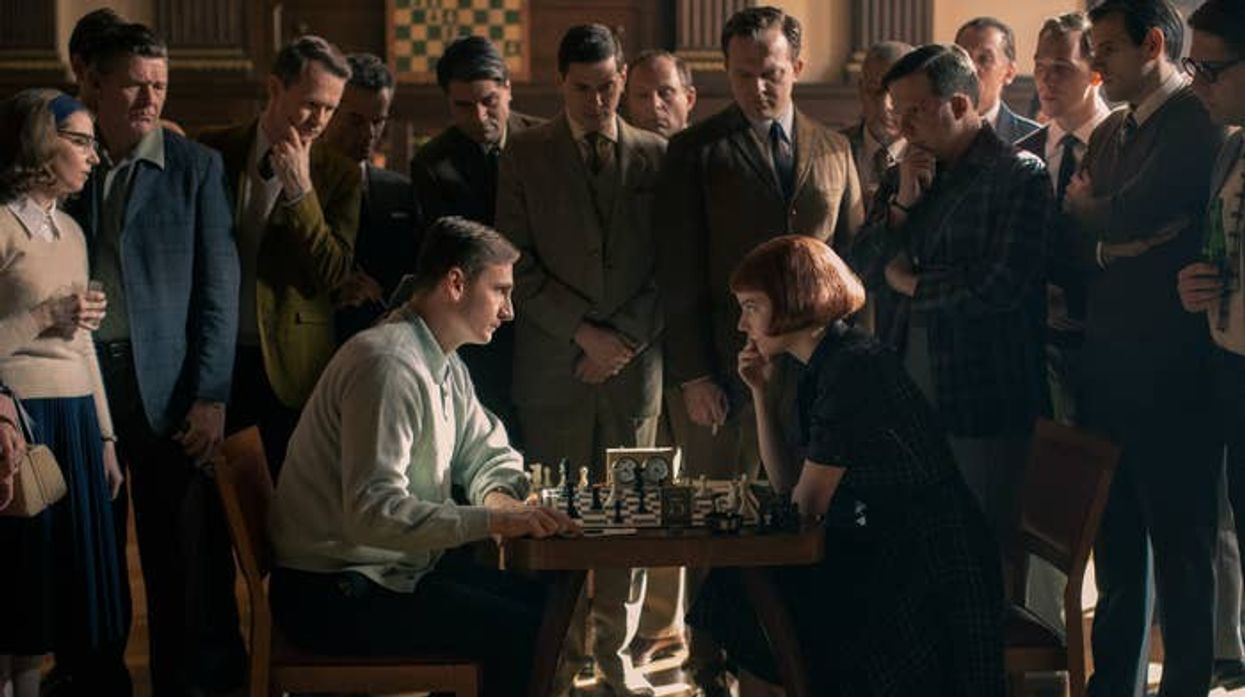How Does 'The Queen's Gambit' Create Conflict Without Words?
Filmmaking is a lot like playing chess.

Any time there is a new Scott Frank project, it's something to celebrate. The versatile writer has brought us into lots of different worlds, and his latest adventure on Netflix takes us inside the world of competitive chess in The Queen's Gambit.
Frank's characters, story, and setting are all masterfully done. I am sure we will write about it many times later.
Today, I wanted to focus on one thing he does that stood out not only to me but to the different filmmaking forums I follow on the internet. It's Frank's ability to use "show, don't tell" to create conflict. While some writers would rely on the narration of physical threats, the world of chess that Frank sells is one where a look could kill.
And you could cut the tension with a knife.
So how do you create conflict when there are no words?
Check out this video from Thomas Flight, and let's chat after the jump.
How does The Queen's Gambit create conflict without words?
In this video, Flight examines a scene where The Queen's Gambit dramatizes chess without dialogue, using performance, cinematography, editing, and score. The scene centers around a game of chess, and because of the technical nature of chess, the filmmakers can't rely on the action on the board, and the conflict and drama have to be created visually.
I used to like playing chess when I was in college and growing up, but somewhere along the way I lost the time and enthusiasm for it. Chess is an absorbing game. You move pieces, but if you don't know how to play, it is hard to follow along.
There are no words, no trash talking, and the only physical part of it is moving the pieces and hitting the clock.
Chess does not scream cinematic—so why does the Queen's Gambit work so well?
The answer lies in a combination of cinematography, editing, direction, and screenwriting.
The scene in question is between Harry Beltik and Beth Harmon. Harry has arrived late and Beth has run his clock down and made the first move. Without characters voicing their anger, we know she's mad he's not taking her seriously. And we know he is annoyed that he is supposed to.
We get low angles on Beth as she "towers" over the board and seems in control—but only in control while Beltik is not there. As soon as he arrives, he looms over Beth, and her power is stripped away.
These emotions are sold to us through the looks of frustration and the way pieces are moved. We also get their demeanor. His casual handshake and her grit. And of course, we get storytelling through the cinematography we just talked about.
As they dive in, the editing helps highlight these elements. We get faster cuts as she tries to make moves that astound him. But we also see his performance loosen up, and the people in the background only respecting his moves.
Body language can also reveal a lot. Beth's physical tics, like slumping shoulders and holding her head in her hands, signify her change in thinking and approach to the game. We don't see the board much because it almost does not matter. We only care about her.
In the middle of the scene, we get a traditional shot-reverse-shot that shows them on even ground. This evening of the pace and equality of the framing lets the audience know she's doing fine, even if Beltik's moves anger her.
As Beth focuses, we push in closer and closer on her via new edits. Especially after she takes her drugs. Once the tranquilizer is in Beth, the scene moves from the more conventional over-the-shoulder shots to dueling close-ups.
It's her versus him, and for the first time, he's scared.
When Beth begins to win, we get a clear reversal of the shots.
We used to have Beltik in those higher angles, but Beth is now in control. He's the one stressing in his close-ups, and we also see that she has more pieces on the board.
The scene closes with the king falling. It's the one move that we all know is universal. And that way the audience, who has been brought inside the game, understands it ends with Beth winning.
Again, this is all done without dialogue. Just editing, direction, some wonderful storytelling, and cinematography that backs up the emotional range of the characters and story.
And it all really works!
Let us know what you think in the comments.
What's next? Get our free screenwriting eBook!
So much of what we're talking about on No Film School when it comes to screenwriting is summarized in our new eBook. It also helps guide you through a 10-week writing plan that will get your script actually finished.
Source: Thomas Flight











